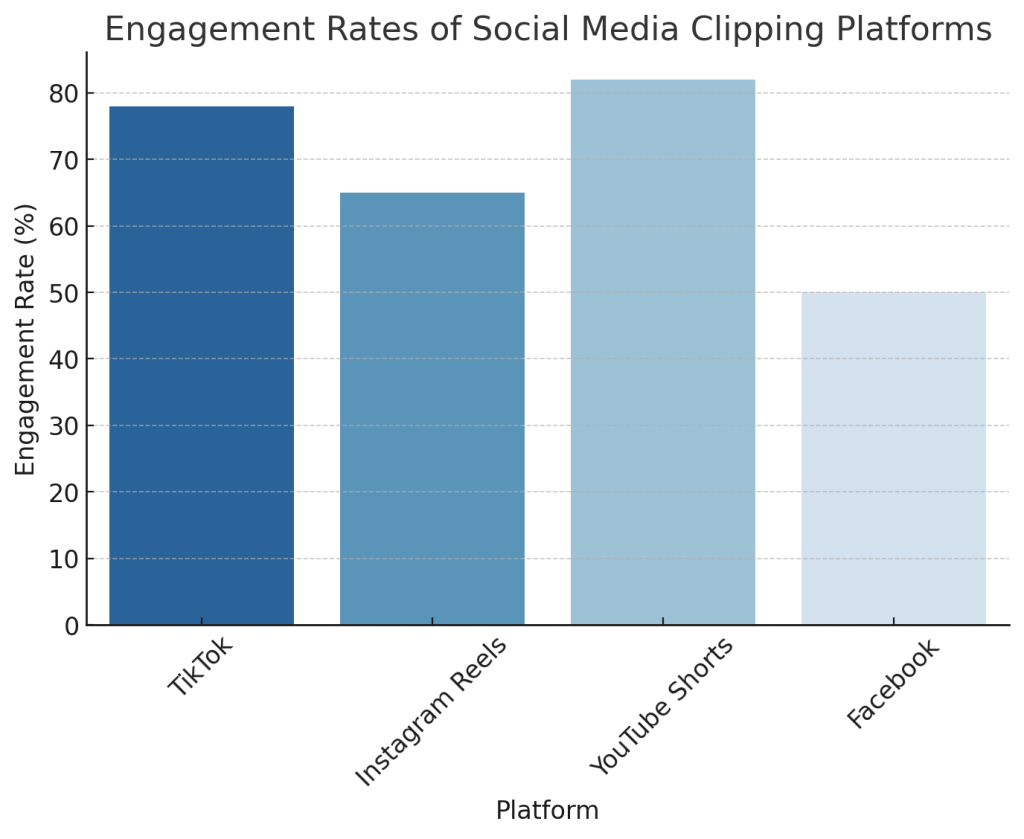Social media clipping is when people take short, interesting parts from longer videos (like podcasts, interviews, or YouTube videos) and turn them into smaller videos for TikTok, Instagram Reels, and YouTube Shorts.
If you’ve ever seen the same clips of Iman Gadzhi, Alex Hormozi, or Andrew Tate over and over on different accounts, that’s not by chance.
These influencers let others share their content by clipping it into smaller pieces.
This helps them become super popular without doing extra work.
Why Are People Clipping Influencer Content?
Clipping isn’t just random fans posting videos. It’s a strategic content distribution method.
Here’s why it works so well:
1. It Creates a Self-Sustaining Promotion Machine
Rather than spending millions on ads, influencers like Andrew Tate and Alex Hormozi let others handle their marketing.
Their fans and content creators take viral moments from their long videos and repurpose them, helping their content spread across platforms without any direct involvement.

2. It Generates Passive Income for Both Influencers and Clippers
Many platforms allow content monetization based on views.
Some influencers create revenue-sharing programs where those who clip their content earn a portion of ad revenue. Platforms like Whop and Clip even formalize this system, giving clippers incentives to post more.
3. It Hacks the Algorithm
Social media platforms reward frequent posting. A two-hour podcast might only perform well on YouTube, but when broken into 50 short clips, it can dominate Instagram, TikTok, and Twitter. More content = more reach.
What Should You Know?
- Social media clipping is a free, organic marketing strategy that helps influencers gain massive exposure.
- Platforms reward short-form video content, making clipping an easy way to exploit algorithms.
- Many influencers encourage and monetize clipping, allowing fans to earn money by posting their content.
- Proper editing, captions, and audio trends matter—lazy clipping doesn’t go viral.
- Clippers can build entire businesses around clipping content, as seen with TikTok compilation pages and Instagram repost accounts.
How Social Media Clipping Works

Step 1: Finding Viral Moments
Clippers search for moments that will trigger engagement—controversial statements, motivational quotes, or compelling insights. The best clips hook viewers within 3 seconds.
Step 2: Editing for Maximum Impact
A good clip isn’t just a raw snippet.
It’s optimized for engagement:
- Captions & Subtitles: Most people watch without sound.
- Dynamic Zooms & Cuts: Keeps attention locked in.
- Trending Audio: Helps boost discoverability.
Step 3: Posting on High-Traffic Platforms
Once the clip is ready, it’s distributed on TikTok, Instagram Reels, YouTube Shorts, and sometimes even Facebook. Some clippers cross-post the same content multiple times with different captions and hashtags to maximize reach.
Why Influencers Encourage Social Media Clipping

It Makes Them Ubiquitous
The most successful internet personalities aren’t just on one platform. They dominate all of them. This is how Andrew Tate went from being relatively unknown to the most Googled man on Earth in 2022—his clips flooded the internet overnight.
It Creates Social Proof
When people see a personality everywhere, they start believing that person must be important. This repetition builds authority and influence.
Alex Hormozi, for example, has a system where his best video clips are cut and optimized by a team, then spread across social media.
It Drives Sales and Followers
Clipping funnels traffic back to the original influencer’s full content, courses, or businesses. Iman Gadzhi, for instance, runs an educational business empire, and his viral clips constantly drive new leads into his programs.
The Risks of Social Media Clipping
While clipping is powerful, it comes with risks:
- Copyright Strikes: Platforms like YouTube have strict rules on monetization. If a clip doesn’t add original value (e.g., captions, commentary), it could get taken down.
- Misinformation: Out-of-context clips can distort messages, leading to backlash or controversy.
- Over-Saturation: Too many identical clips can make an influencer seem repetitive, reducing engagement.
Social media clipping isn’t just a trend. It’s a core strategy used by today’s top digital entrepreneurs.
Whether you’re an influencer looking to expand your reach or a content creator searching for a profitable niche, mastering the art of clipping can be huge.
FAQs
Is social media clipping legal?
Yes, if done correctly. Adding commentary, captions, or creative edits makes it transformative, which usually falls under fair use.
Can I make money from clipping influencer content?
Some influencers allow it, especially if they run revenue-sharing programs. Others might claim copyright, so it depends on the creator.
What’s the best platform for posting clipped content?
TikTok, Instagram Reels, and YouTube Shorts are the most effective due to their high organic reach.
Do influencers hire people to clip their content?
Absolutely. Many influencers have full-time teams or freelancers cutting and posting clips for them daily.
What makes a clip go viral?
Strong hooks, engaging edits, controversial or emotional content, and using trending sounds.
Recommended Tools For Solopreneurs
Growharo Alert – The daily minimalistic newsletter about building faceless YouTube channels, newsletter businesses and profitable content ecosystem. Join now.
Get 120 premium email marketing prompts and much more from helpful resoursces form Haus of Nume.
Building Newsletters
Kit – A newsletter platform loved by successful entrepreneurs for its ability to create an all-in-one place for content and digital product distribution. Get free account.
Beehiiv – Simplicity and effectiveness are the mottos of this newsletter platform. It is so powerful that most successful newsletters use it. Start for free.
Building Faceless YouTube Channels
ElevenLabs – One of the best and cheapest tools that can give you human-sounding AI voices. I use it for multiple of my channels. Learn more.
Free Tools For Faceless Creators
If you are trying to create a faceless YouTube channel, newsletter, or just any side hustle, check out these free tools made for digital hustlers.
Disclosure: Some of the links above may contain affiliate partnerships, meaning, at no additional cost to you, Growtharo may earn a commission if you click through to make a purchase.
- Why Batching Interlinked Series Makes YouTube Growth Easier - September 4, 2025
- Key Man Risk Explained: Build a Business That Outlives You - September 3, 2025
- Why Platform Loyalty Will Destroy Your Online Business - September 1, 2025







